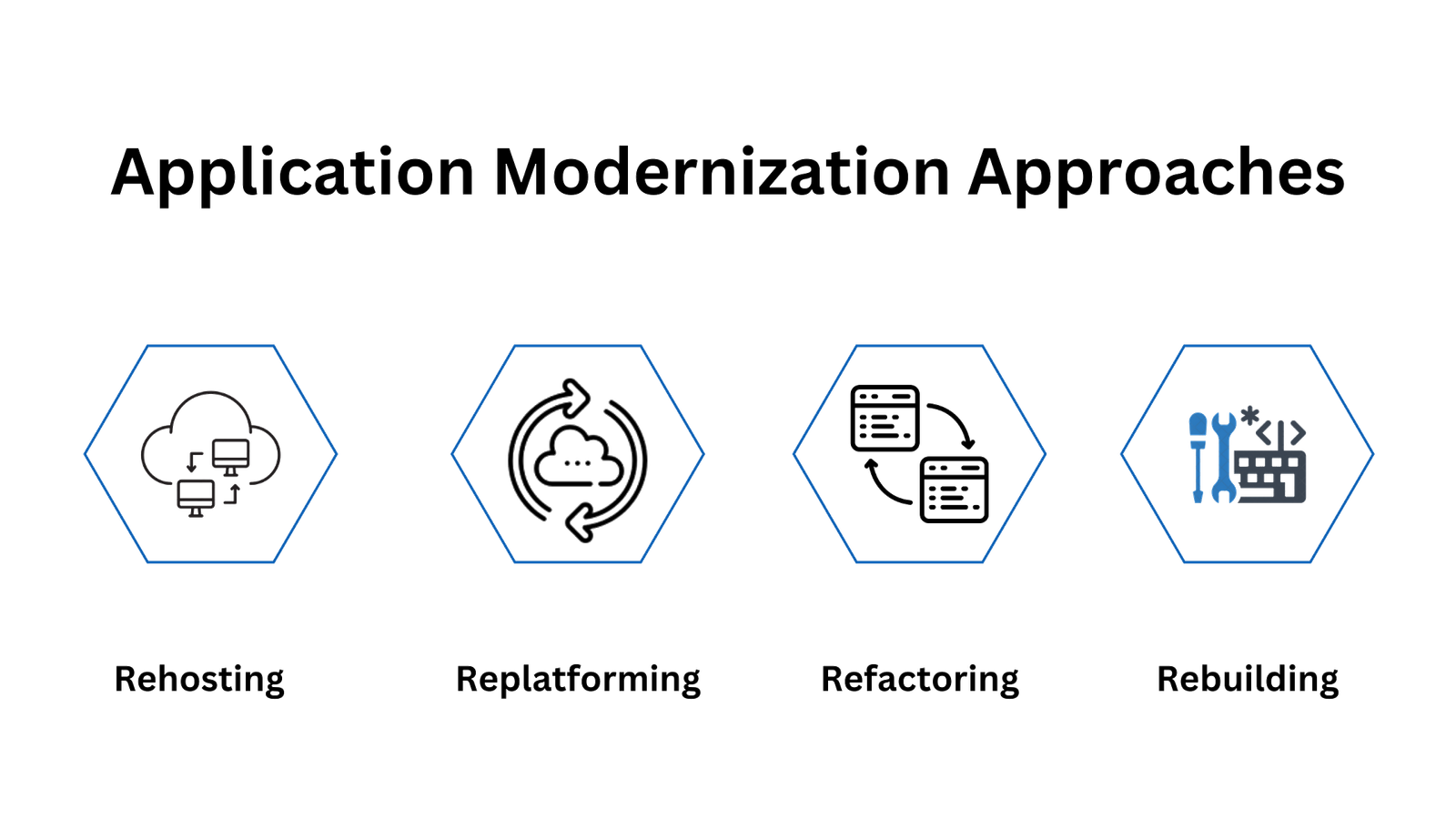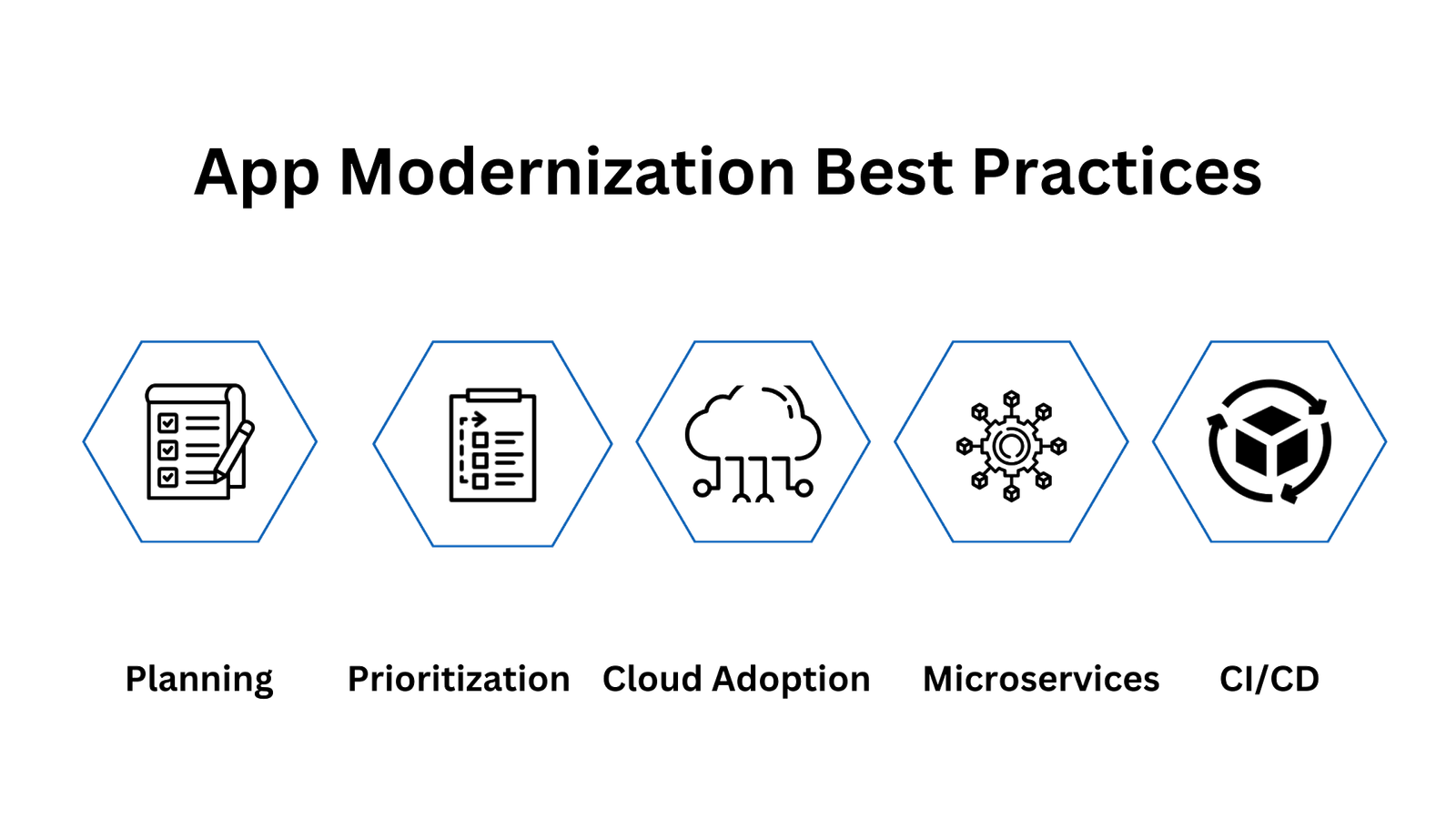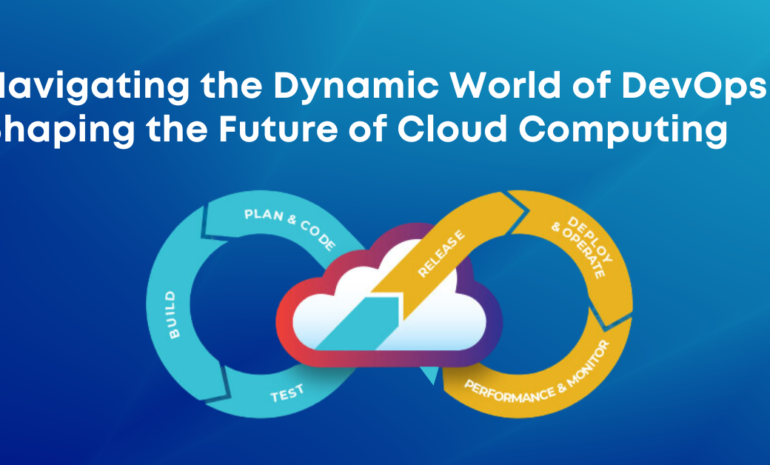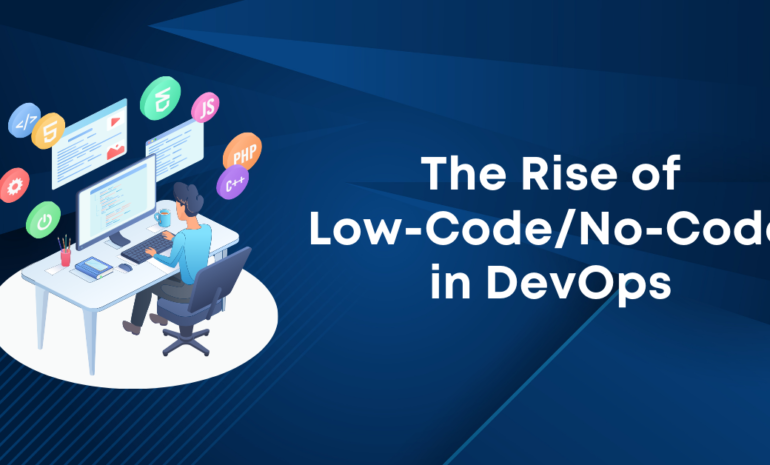Application Modernization: Benefits, Challenges, and Approaches
In today’s fast-paced digital landscape, businesses are constantly striving to stay ahead of the competition and meet the evolving demands of their customers. Application modernization has emerged as a strategic approach to revamp outdated systems, enhance efficiency, and unlock new opportunities for growth.
What is application modernization?
Application modernization refers to the process of updating or transforming existing software applications to leverage the latest technologies, improve performance, enhance security, and align with current business needs. It involves optimizing legacy systems, migrating to the cloud, adopting microservices architecture, and utilizing modern development practices like CI/CD. By modernizing applications, businesses can stay competitive, streamline operations, and provide better user experiences.
When to consider application modernization?
Application modernization is a strategic initiative that businesses should consider under specific circumstances to stay competitive, enhance performance, and align with evolving technology trends. Here are some key scenarios that indicate when it is appropriate to consider application modernization:
Legacy Systems: If your business relies on outdated, monolithic applications that hinder agility, scalability, or integration with modern technologies, it’s time to consider modernization. Legacy systems often lack the flexibility and efficiency needed to adapt to changing business requirements.
Performance and Scalability Issues: When your applications struggle to handle increased user demand, experience slow response times, or exhibit scalability limitations, modernization can help optimize performance, enhance scalability, and deliver a seamless user experience.
Security and Compliance Concerns: If your applications are vulnerable to security threats or fail to comply with industry regulations, modernization becomes imperative. Updating and fortifying applications can strengthen security measures, protect sensitive data, and ensure compliance with evolving standards.
Maintenance Challenges: If your IT team spends significant time and effort on maintaining and supporting outdated applications, modernization can alleviate the burden. Modernizing applications can streamline maintenance efforts, reduce costs, and free up resources for more strategic initiatives.
Integration Requirements: When your applications struggle to integrate with newer systems, APIs, or cloud-based services, modernization can enable seamless integration and interoperability. Modern architectures and technologies facilitate smoother data exchange and collaboration between applications.
User Experience Enhancements: If your applications no longer meet user expectations or lack modern features, a modernization effort can revamp the user experience, improve usability, and drive customer satisfaction.
Business Expansion or Digital Transformation: When your business undergoes significant growth or embarks on a digital transformation journey, modernizing applications becomes crucial. Modernized systems can support scalability, facilitate innovation, and enable new business models.
Myths of Application Modernization
Application modernization is a critical process for businesses to stay competitive in the digital age. However, there are several myths surrounding this transformational practice that can hinder its adoption. Let’s debunk some of the common misconceptions about application modernization:
Application modernization is only for large enterprises: This myth overlooks the fact that small businesses can also benefit from modernizing their applications. Modernization can help them enhance agility, reduce costs, and deliver better customer experiences.
Application modernization requires a complete overhaul: Contrary to this belief, modernization can be achieved incrementally, focusing on high-priority areas while preserving core functionalities. It allows businesses to adopt a phased approach, minimizing disruption and risk.
Application modernization is too expensive: While there are costs associated with modernization, it’s crucial to consider the long-term benefits it brings. Modernized applications often result in improved efficiency, reduced maintenance costs, and increased scalability, leading to overall cost savings.
Application modernization compromises security: On the contrary, modernization can enhance security by implementing updated security protocols and mitigating vulnerabilities present in legacy systems.
Application modernization is a one-time project: Application modernization is an ongoing journey. It requires continuous assessment, adaptation, and evolution to keep up with changing business needs and technological advancements.
Benefits of Application Modernization:
Modernizing applications benefit you to stay flexible and competitive, and you can also bankroll key technologies such as artificial intelligence, machine learning, and cloud computing. Apart from this, it is the perfect strategy to enhance customer engagement and extend your user base.
Let’s understand why every enterprise should consider modernizing its legacy applications –
- Enhanced Agility and Scalability: Modernizing applications enables businesses to adapt quickly to changing market dynamics, scale resources as needed, and respond to customer demands efficiently.
- Improved User Experience: Outdated applications often suffer from slow response times, poor usability, and limited functionality. Modernization allows for the integration of intuitive interfaces, seamless navigation, and improved overall user experience, leading to increased customer satisfaction and loyalty.
- Increased Efficiency and Productivity: Modernized applications leverage the latest technologies, automation, and streamlined workflows, enabling employees to accomplish tasks more efficiently. This boost in productivity can positively impact operational processes and optimize resource allocation.
- Cost Reduction: Legacy systems often require extensive maintenance, have high licensing fees, and lack compatibility with modern infrastructure. Modernizing applications eliminates these inefficiencies, reduces maintenance costs, and enhances cost-effectiveness in the long run.
- Competitive Advantage: By leveraging modern technologies, businesses can gain a competitive edge in the market. Modernized applications can support innovative features, integrations, and data analytics, enabling companies to deliver unique value propositions to their customers.
Application modernization challenges:
Modern-day tech leaders need to deal with a complex app scenario that includes different technologies, infrastructure, and frameworks overlapping with existing business goals and business processes. Then there are challenges related to cultural change in the IT landscape, app development budget, and upgradation of development skills.
Here are some more application modernization challenges you may face while determining the flow of the modernization process –
- Legacy Integration: Integrating legacy systems with modern architectures can be complex, especially when dealing with multiple platforms and technologies. Ensuring smooth data transfer and seamless functionality during the modernization process requires careful planning and expertise.
- Data Migration and Security: Migrating large volumes of data from legacy systems to modern platforms demands meticulous planning to avoid data loss, corruption, or security breaches. Protecting sensitive information throughout the migration process is of utmost importance.
- Skill Gap: Employing skilled professionals who understand both legacy and modern technologies can be a challenge. Organizations need to invest in training or hire external experts to navigate the complexities of application modernization successfully.
Application Modernization Approaches:
The demands of the modern world call for consistently updated applications to fulfill the needs of integration, stability, data security, and scalability in a cloud-first environment.
Follow these application modernization best practices to embark on the enterprise application modernization journey:
- Rehosting or Lift-and-Shift: This approach involves moving applications to a modern infrastructure while maintaining their core functionality. It offers a quick and cost-effective solution, but may not fully exploit the potential benefits of modernization.
- Replatforming: In this approach, applications are moved to a new platform, such as a cloud environment, while making minor modifications to improve performance and scalability. It offers a balance between cost and flexibility.
- Refactoring or Re-architecting: This approach involves restructuring applications, breaking them into modular components, and leveraging modern architectural patterns. It offers greater flexibility, scalability, and resilience but requires a deeper understanding of the existing codebase.
- Rebuilding: Rebuilding involves rewriting applications from scratch, typically using modern frameworks and technologies. While it offers the most comprehensive modernization, it requires significant time, resources, and careful planning.
Application modernization best practices
Application modernization is a critical process for businesses seeking to adapt to the ever-changing technological landscape. To ensure a successful modernization journey, it is important to follow best practices that can maximize the benefits and minimize potential challenges.
- Assessment and Planning: Begin by conducting a thorough assessment of your existing applications, identifying pain points, and defining your modernization goals. Develop a detailed roadmap that outlines the steps and timelines for the modernization process.
- Prioritization: Prioritize applications based on business value, technical feasibility, and potential impact. Start with low-risk, high-value applications to gain early wins and build momentum.
- Cloud Adoption: Consider migrating applications to cloud platforms to leverage scalability, flexibility, and cost optimization. Select the appropriate cloud provider and architectural model based on your specific requirements.
- Microservices and Containers: Adopt a microservices architecture and containerization to enhance agility, scalability, and maintainability. Decompose monolithic applications into smaller, independently deployable services.
- Continuous Integration and Delivery (CI/CD): Implement CI/CD practices to automate build, testing, and deployment processes. This ensures faster feedback cycles, shorter release cycles, and improved software quality.
Conclusion: Application modernization is a crucial step for businesses aiming to thrive in the digital era. By embracing modernization, companies can unlock numerous benefits, including increased agility, improved user experience, enhanced efficiency, cost reduction, and a competitive advantage. Although there are challenges in the modernization journey, careful planning, collaboration with experts, and selecting the appropriate approach can help overcome these obstacles. Remember, application modernization is not a one-time event but an ongoing process to ensure continuous evolution and success in today’s dynamic business landscape.
To modernize your legacy apps with next-gen tools and technologies. Contact our CloudZenix expert at info@cloudzenix.com.





